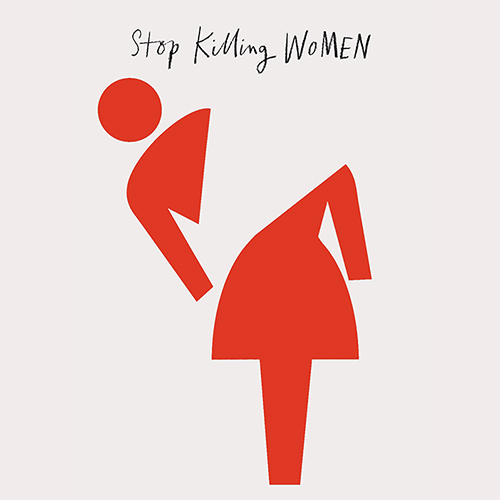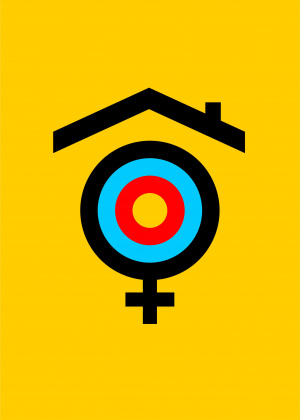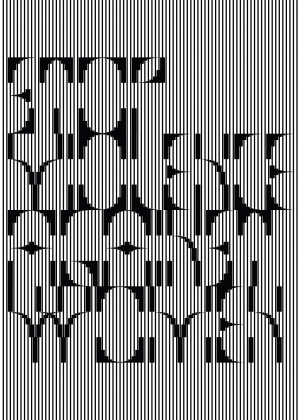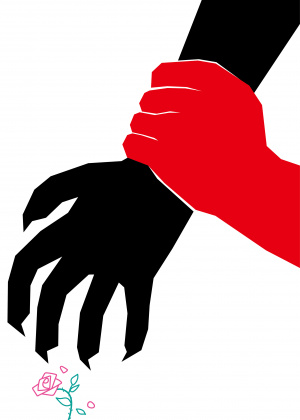The torn woman in the poster presents several questions that challenge the viewer: "Why is she missing? Who tore her away? What kind of poster was she torn from? Who was she?". These questions invite a profound reflection on violence against women, highlighting the severity and the often invisible nature of this issue. The poster prominently features colors and textures that play a crucial role in the visual narrative.
In the white background, the eyes of both the man and the woman are visible, raising ambiguity about whether he was responsible for her absence or if someone else was. These eyes confront us with the duality of the man's role: protector or aggressor? The top right corner, where the gazes meet, is slightly darkened, also playing with the perception of the concept that each individual finds relevant. It can be taken as a sign that something strange is happening, that not everything is as clear as it seems.
In the red, the man’s hand gripping her is depicted, which can be interpreted as a gesture of protection or, conversely, as a symbol of possession. The color red communicates passion but also warns how this passion can overflow and turn into unjustified violent acts.
The poster brings to the forefront the act of tearing away the sheet, symbolizing the forced removal of the female presence. Through points of tension and a deliberately off-center composition, the poster conveys unease, reflecting the forced absence and leaving the viewer to reconstruct the context of this violence. This void, where the woman should be, forces the viewer to confront the harsh reality of violence and reflect on the impact of the forced disappearance in the visual narrative. The graphic piece invites a critical reflection on how society perceives and responds to violence against women, emphasizing the urgent need to take action to stop this issue.
This poster belong to
Stop killing women

According to UN Women, 2022 was the year in which the most women were intentionally murdered to date: nearly 89,000. Of these ‘Around 48,800 women and girls worldwide were killed by their intimate partners or other family members (including fathers, mothers, uncles and brothers). This means that, on average, more than 133 women or girls are killed every day by someone in their own family.’
If it’s not bad enough that femicide is increasing, the real statistic is probably much higher: ‘for roughly four in ten intentional murders of women and girls, there is not enough information to identify them as gender-related killings because of national variation in criminal justice recording and investigation practices’.
This must change. So this year, we want to ask your help in drawing attention to all forms of violence against women: for the world to stop killing women.
Readmore





